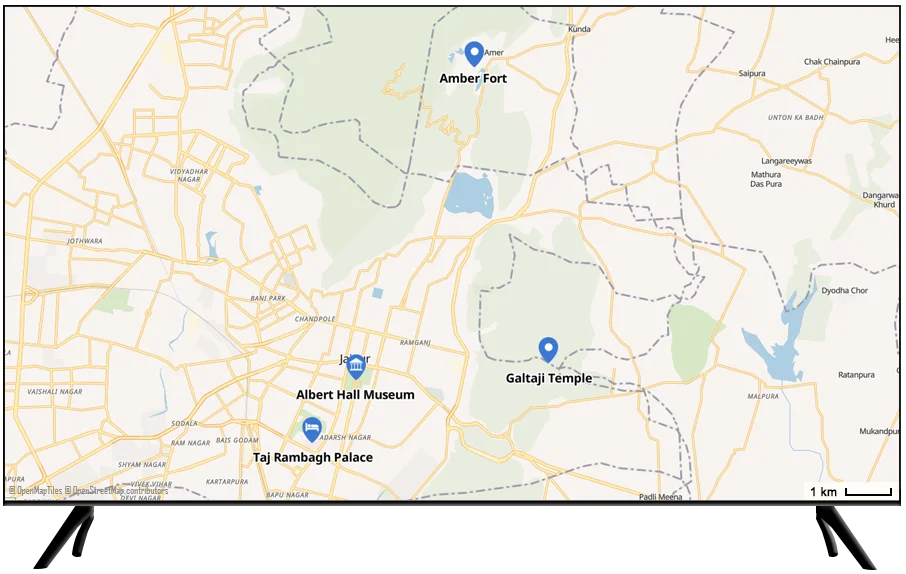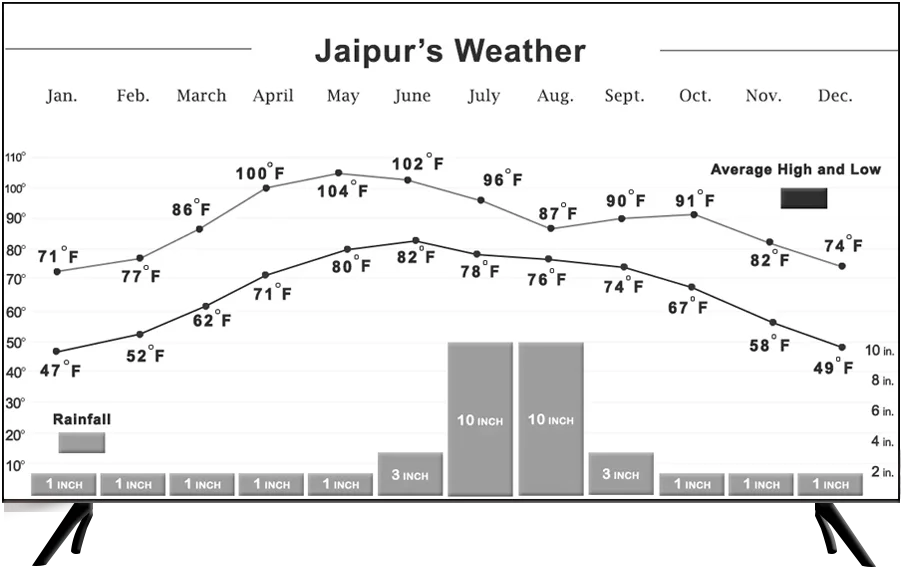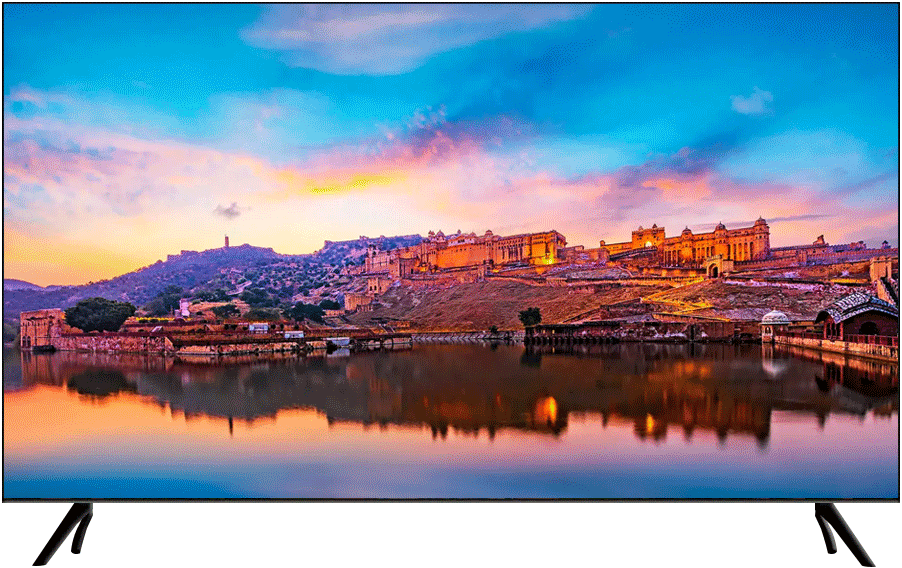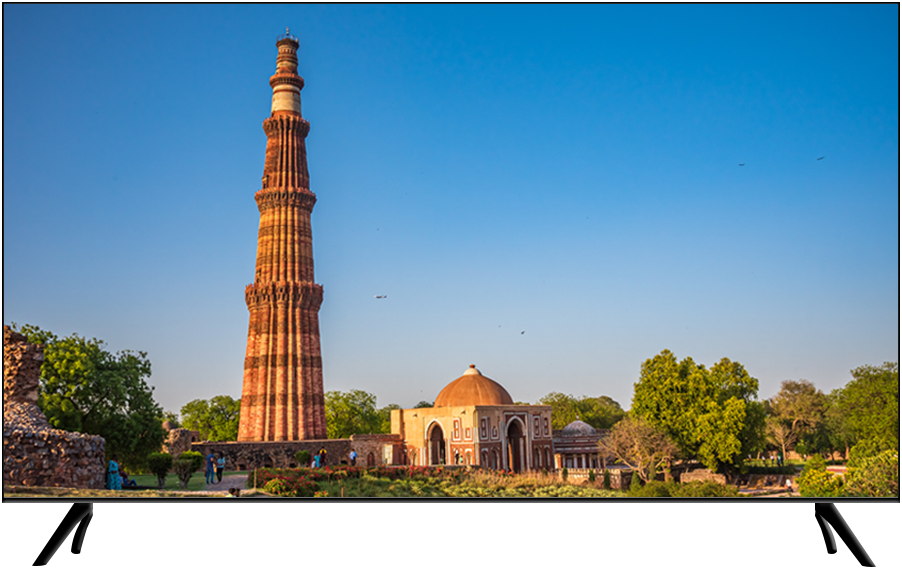



Day 8. Jaipur
Overnight – Rambagh Palace
Albert Hall. You first experience this morning will be at the exterior of the Albert Hall Museum to admire the gorgeous Indo-Saracenic architecture. The building was completed in 1887 by Sir Samuel Swinton Jacob and the extremely ornate structure was built out of marble and stone by Rajasthan’s unmatched craftsmen. Its exterior walls are painted with depictions of ancient civilizations. Rudyard Kipling (himself the son of a museum curator) on a visit was so impressed that he wrote “it is now a rebuke to all other museums in India from Calcutta downwards”.
We recommend touring some of the museums exhibits as, being Rajasthan’s State Museum, it was designed to reflect Rajput design and color. You can explore the sections that interest you, picking from many fascinating collections of historic craftsmanship such as pottery, jewelry, weavings, sculptures, paintings, to a collection of coins spanning many eras of India’s long history.
Monkey Temple. From the Albert Hall you are driven into Jaipur’s Aravalli Hills and the ancient Hindu pilgrimage site of Galtaji. The 15th Century group of temples here are sometimes called the Monkey Temple because of a large troop of monkeys makes their home in this part of the hills. They jump into and swim around the main pond with reckless abandon and their social behavior and grooming rituals can be fascinating to watch.
The picturesque complex of temples has seven ponds that are fed by springs on the surrounding hilltops. You can explore inside the beautiful pink stone Galtaji Temple, and there are other ancient temples in the complex for those interested. The Rajasthani architecture makes them very different from most temples in North India. A bit of an uphill hike can bring you to the hilltop Sun Temple.
Amer Fort: You have many options for lunch today from which your guide will assist you in selecting. Your last and most awe-inspiring experience in Jaipur is the gargantuan Amber Fort and Palace complex, a UNESCO World Heritage Site. The 16th century complex sprawls over a number of hills and their valleys, with rolling defensive walls surrounding the hills around it and was home to the Jaipur Royal Family for about a century and a half.
Fort Architecture and Design. The massive citadel is visually stunning from the ground with just the façade of the visible walls, towers, gardens, and ramparts as they conform to the contours of the hills. Inside the citadel the views only improve, but now, changing the scale, it is time to admire the intricacy and creativity in the breathtakingly beautiful displays in chambers and hallways that you will experience. You will see how the king lived and ruled, how the noblemen ran the kingdom, how the proud Rajasthani Queens ran the women’s section, how food, water, and waste were handled, all while admiring the wonderful architecture and craftsmanship.
Albert Hall. You first experience this morning will be at the exterior of the Albert Hall Museum to admire the gorgeous Indo-Saracenic architecture. The building was completed in 1887 by Sir Samuel Swinton Jacob and the extremely ornate structure was built out of marble and stone by Rajasthan’s unmatched craftsmen. Its exterior walls are painted with depictions of ancient civilizations. Rudyard Kipling (himself the son of a museum curator) on a visit was so impressed that he wrote “it is now a rebuke to all other museums in India from Calcutta downwards”.
We recommend touring some of the museums exhibits as, being Rajasthan’s State Museum, it was designed to reflect Rajput design and color. You can explore the sections that interest you, picking from many fascinating collections of historic craftsmanship such as pottery, jewelry, weavings, sculptures, paintings, to a collection of coins spanning many eras of India’s long history.
Monkey Temple. From the Albert Hall you are driven into Jaipur’s Aravalli Hills and the ancient Hindu pilgrimage site of Galtaji. The 15th Century group of temples here are sometimes called the Monkey Temple because of a large troop of monkeys makes their home in this part of the hills. They jump into and swim around the main pond with reckless abandon and their social behavior and grooming rituals can be fascinating to watch.
The picturesque complex of temples has seven ponds that are fed by springs on the surrounding hilltops. You can explore inside the beautiful pink stone Galtaji Temple, and there are other ancient temples in the complex for those interested. The Rajasthani architecture makes them very different from most temples in North India. A bit of an uphill hike can bring you to the hilltop Sun Temple.
Amer Fort: You have many options for lunch today from which your guide will assist you in selecting. Your last and most awe-inspiring experience in Jaipur is the gargantuan Amber Fort and Palace complex, a UNESCO World Heritage Site. The 16th century complex sprawls over a number of hills and their valleys, with rolling defensive walls surrounding the hills around it and was home to the Jaipur Royal Family for about a century and a half.
Fort Architecture and Design. The massive citadel is visually stunning from the ground with just the façade of the visible walls, towers, gardens, and ramparts as they conform to the contours of the hills. Inside the citadel the views only improve, but now, changing the scale, it is time to admire the intricacy and creativity in the breathtakingly beautiful displays in chambers and hallways that you will experience. You will see how the king lived and ruled, how the noblemen ran the kingdom, how the proud Rajasthani Queens ran the women’s section, how food, water, and waste were handled, all while admiring the wonderful architecture and craftsmanship.

